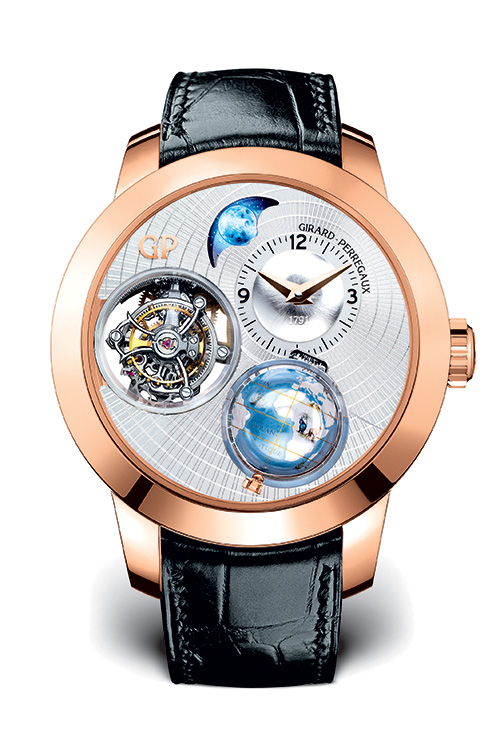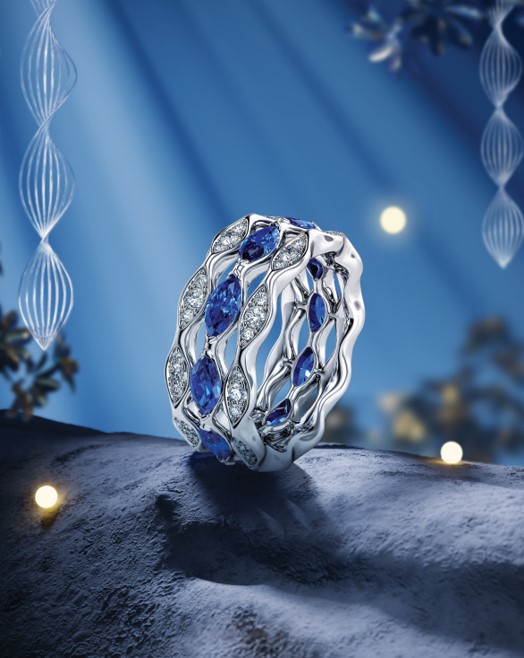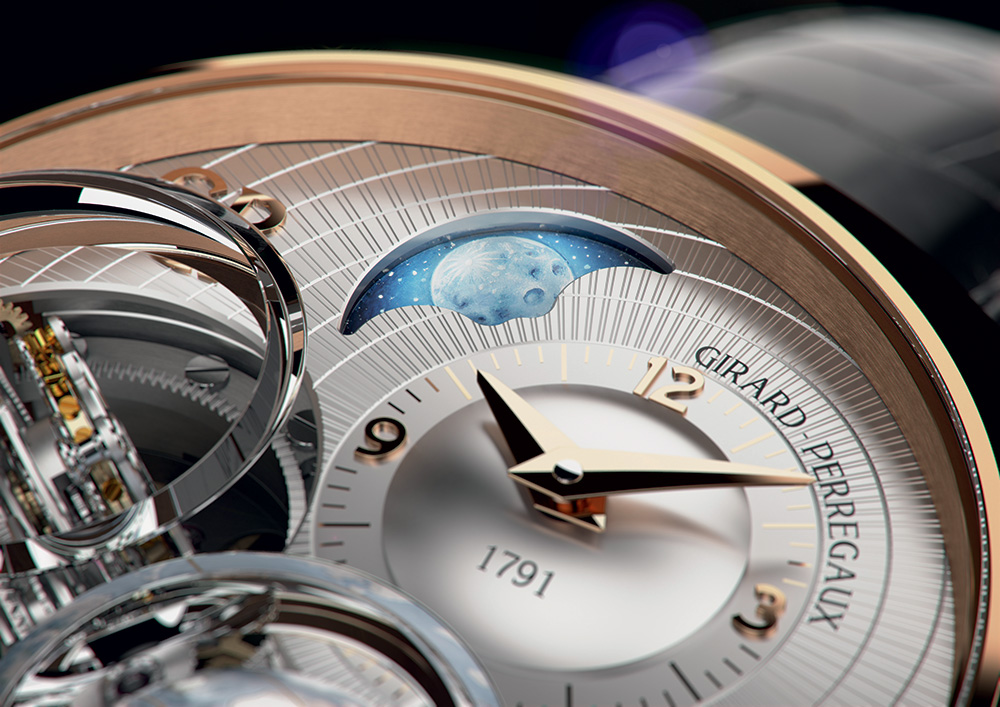
All Girard-Perregaux fans – and there are multitudes of them – know the Laureato, a sports watch designed by an architect. For the past four decades the Laureato has reappeared from time to time in various new guises, but always with the distinctive inner octagon in a circular case. This design reflects light in an intriguing way. For SIHH this year, the Laureato was revived again, with a nod to the 1990 version on the dial.
Post from RICOH THETA. – Spherical Image – RICOH THETA
The first Laureato, introduced in 1975, was an important innovation, as it housed the first quartz movement certified by the Contrôle Officiel Suisse des Chronomètres. There is a Laureato to suit every taste. The nearly 30 variants include automatics, quartz movements and high complications, and come in a range of materials.
The background on the dial of the latest Laureato is the same as on the dial of the 1990s model: a hobnail pattern, in gunmetal grey or white, known as Clous de Paris. Immediately inside the octagon is the minutes ring, which is white on black. The hour markers are big and bold in white. So are the baton hands.
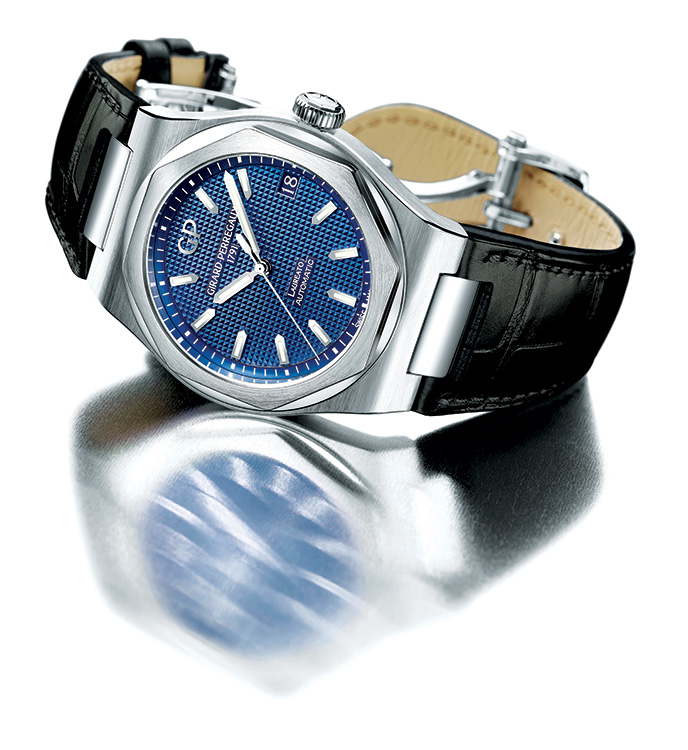
The seconds hand is thin and black. There is a date window at 3 o’clock, along with a bit of reading matter. The GP logo is at 12 o’clock, and the name “Girard-Perregaux 1791” is inscribed in capitals beneath it. The description “Laureato Automatic” appears in the middle of the lower half. The minutes ring bears the inscription “Swiss Made” at 6 o’clock. All in all, it is a busy watch face.
Post from RICOH THETA. – Spherical Image – RICOH THETA
The new Laureato is available in various sizes and materials, and with various bracelets. The watch comes in 42mm, 38mm and 34mm versions. The 42mm version is made either of steel or of titanium and pink gold, and the colour of the dial can be either silver-grey, slate grey or blue. The calibre GP01800 is visible through the open back. The 38mm version is driven by the self-winding GP03300. It is available in steel or pink gold. It is considered a unisex watch. An option is a 56-gem diamond bezel. The 34mm model is a lady’s watch. It is made of steel, with a diamond bezel, or of pink gold. It is only 7.75mm thick.
A manifestation at SIHH of Girard-Perregaux expertise in tourbillons was the Laureato Tourbillon, a 45mm watch which is less than 12mm thick. It is made of titanium accented with pink or white gold. The calibre GP09510 is a self-winding movement. The micro-rotor can be seen through the front at 6 o’clock. The tourbillon bridge of solid gold is prominent, stretching from edge to edge of the watch face. Those keen to see more of the movement need only turn the watch over.

More spectacular is the Girard-Perregaux Neo-Bridges, an automatic driven by the calibre GP08400, which has a 50-hour power reserve. It’s all there on the dial in contrasting black and silver with pink accents. The twin barrels are visible in the top half, and the balance wheel can be seen at six o’clock. The 45mm case is titanium and is water-resistant to 30 metres.
The WW.TC rejoined the famous Girard-Perregaux 1966 collection at SIHH. The name is an abbreviation of worldwide time control, a concept Girard-Perregaux floated in the 1960s. The latest model is said to be more user-friendly. The crown at 9 o’clock sets the time zone, and the crown at 3 o’clock sets the minutes and hours. A disc rotates to indicate night when its black half is showing and day when its white half is showing. The watch has a power reserve of 46 hours.
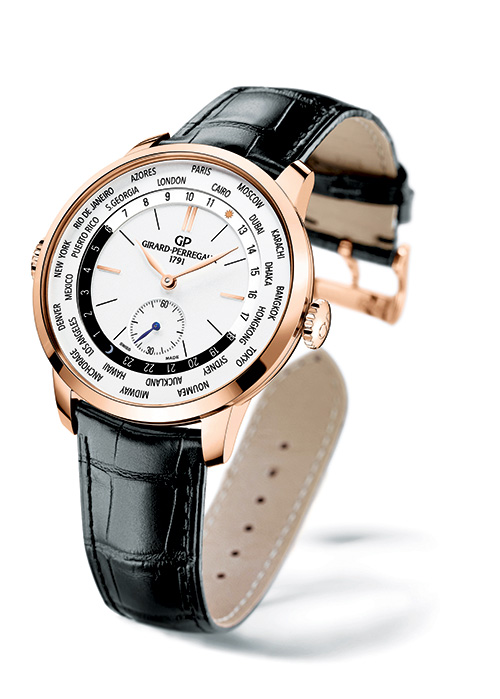
The high point of the Girard-Perregaux contribution to SIHH was the unveiling of the Tri-Axial Planetarium. The watch is a delight to behold. It has a 48mm pink gold case. The silver-grey dial bears a pattern of radiating circles. What catches the eye immediately is the hand-painted rotating globe. Also delicately painted is a moon phase display. Balanced beautifully with these are the open-work tri-axial tourbillon and the time display dial.
The tourbillon regulator operates on three rotation axes, so the watch is well worth putting on display. The astronomical complications are just as impressive. As the globe rotates an arrow indicates whether it is day or night in any given place. It is a representation of the world as it appeared to geographers in 1791, the year Girard-Perregaux was founded. The lunar disc is a hand-painted representation of the night sky as it appeared to astronomers of the same era. The movement is the calibre GP09310-0001 and the power reserve is 70 hours.
